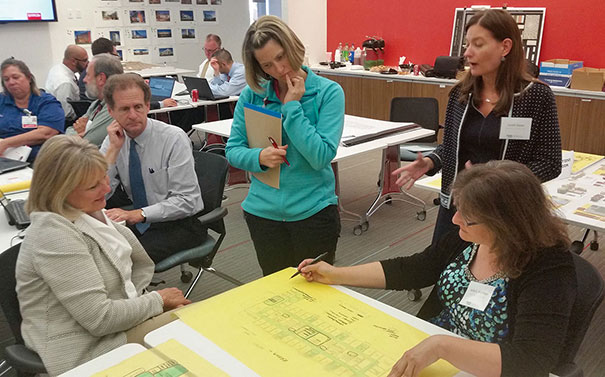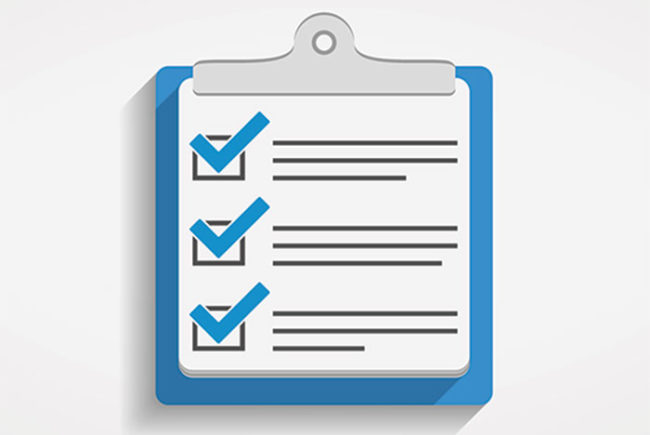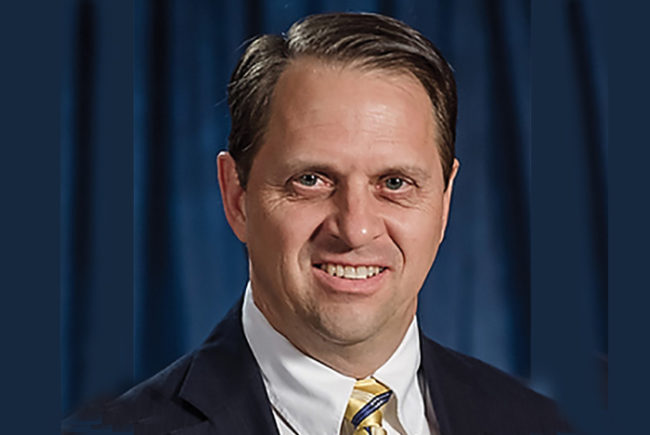
Design professionals from EwingCole work with medical staff on a facility design.
Jennie Evans, R.N., was working as a pediatric oncology/bone marrow and pediatric intensive care nurse at Children’s Medical Center in Dallas when the hospital embarked on a major facility expansion project. “I fell in love with the design process,” says Evans. She was the first nurse hired by architecture firm HKS Inc. to provide a clinical perspective on health facility design. She has since added LEED AP, EDAC and Lean Six Sigma CE to her credentials and become a senior vice president/associate principal at HKS, which now has a business consulting division dedicated to health care.
Evans’ career path is an increasingly common one, as design firms develop a greater understanding of the importance of having experienced nurses on staff to work with design teams.
“Who better to speak on behalf of a nurse than a nurse in designing environments?” asks Kathy Okland, R.N., MPH, NA, EDAC, senior health care consultant for design and manufacturing firm Herman Miller Inc. Okland says her nursing career, which included bedside care, administration and the development of major facility projects, has given her an understanding of the nuances of direct patient care and what multiple disciplines contribute, as well as the decision-making involved in strategy and large capital expenditures. “It has uniquely equipped me to engage in conversation with any health care provider I might walk into a room with, so I can be the voice of why nurses inform design,” Okland says.
Also in this article |
| Nurses make their rounds in health care design |
| Groups work to promote role of caregivers in design |
| |
Teenie Bracken, R.N., NNP, EDAC, clinical health care planner for design firm EwingCole, says the combination of her work as a nurse and her training as a designer gives her knowledge of the healing environment, what it takes to deliver quality care, how to support patients and their family members and how to keep patients safe, as well as the elements of good design. “I think it’s a really good marriage,” she says.
Bracken says she draws on her clinical experience to envision how spaces might — or might not — work for nurses, as early in a project as schematic design. “I start to imagine procedures functioning in the space that we’re designing,” she says. “I can bring that to the table early, so we don’t have problems further down the road.”
Nurses familiar with facility design can help hospital nurses to understand the process and terms involved, says Bracken. She can explain, for example, what a 5-foot turning radius required by the Americans with Disabilities Act means to a design, or the impact an 8-foot corridor required by life safety and building codes has on the layout of a unit.
Similarly, Marvina Williams, R.N., Lean Black Belt, senior associate at design firm Perkins+Will, says she can help designers understand nursing terms like “provider triage.” Having a nurse as part of the design team helps users to feel more at ease, she adds. “They really relate to a clinical person being on the architects’ side of the table, because they know that we have walked in their footsteps. We understand their issues,” she says. “I feel like I’m a liaison between the client and the architects.”
Despite her passion for design, Williams admits some initial reluctance to leave full-time hospital nursing. “I was afraid at first, when I got into this, that I was leaving something that was so dear to me, but I feel like I’m able to help patients and staff, just in a different way,” she says.




